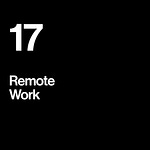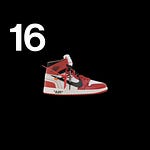Supported by:
Daylight Computer: the healthiest computer
Baked Graphics: amazing 3D video mockups
Framer: the best website builder for designers
ProtoPie: the best hi-fidelity interface prototyping tool
“Design” means one thing to a graphic designer, another thing to an engineer, and something else to a business consultant. Even within the design discipline, a Silicon Valley manager and a Danish joiner are unlikely to be imagining the same thing as they both talk about design.
As a scholar of design I spent a lot of time learning and thinking about what we might call “mental models” for design that apply regardless of specialization. The academic literature gave me many elaborate models, but I needed something simple: I find myself in a lot of situations where I must explain the workings and value of design to people who genuinely don't have the time.
I found what I needed in the concepts of “strategy” and “tactics.”
Definitions
In the previous episode, I asked Lundgren+Lindqvist co-founder Carl-Johan Lindqvist about how they define the value they create for clients, and this was his answer:
We say that we do design and development with purpose and precision. The "precision" is what you see in how the work is executed, the craft, the graphic design bit. "Purpose" is the strategic side of things: grasping our clients' needs in terms of visual communication, telling a story...
I see other designers and design leaders using similar language.
Alina Wheeler – who wrote the book on Designing Brand Identity – has said: "Design is intelligence made visible."
Designer Lorinda Mamo claims: "Every great design begins with an even better story."
So, there are two kinds of competences that make up what design is: the theoretical and the practical. And we can use this as a mental model for how we think and talk about design – as a kind of philosophy for what design is, what it means to be a designer and to do design.
Activities
Design, in all its shapes and flavors, involves two kinds of activities:
Picking problems, and solving them.
Making decisions, and executing them.
Reasoning, and crafting.
I like the concepts “strategy” and “tactics” to capture what these two sides of design are about.
As far as I can tell this appears to be the choice of words that professional designers and design leaders use. I've heard high-caliber design leaders like IBM's Phil Gilbert talk about strategy and tactics on the High Resolution podcast, to explain design excellence in corporations. I have also seen the same language in books like Creative Strategy and the Business of Design by Douglas Davis and The Win Without Pitching Manifesto by Blair Enns – both excellent playbooks for how to thrive as a creative professional.
Strategy is brain-work – more often than not it’s abstract and invisible, and challenging to articulate. This is the research, analysis, and debate that goes into making decisions, and the data that comes from observations, interviews, user studies, post-its, brainstorms, and mind maps.
Strategy is about making decisions based on evidence and intelligence. In this way, strategy strives to be objective. Good strategy is based on data and logic.
Tactics, on the other hand, are easy to see – this the work we do with our hands. This is the craftsmanship that goes into the visible aspects of a product. This is your typefaces, illustrations, colors, whitespace, and rounded corners.
Tactical work builds the visual and tangible aspects of design. Great design tactics are a result of taste and dedication. At times, they defy logic.
Unity
As Sun Tzu puts it in his classic The Art of War:
All men can see the tactics whereby I conquer, but what none can see is the strategy out of which victory is evolved.
And though it's useful to be able to tell them apart, design is about strategic and tactical work happening together.
At the heart of many stubborn design projects and unimpressive outcomes are people coming in with an incompatible mental models; overplaying strategy or tactics, and neglecting the other. We all know the "designer" who's the master of all user research methods but can't tell their letterspacing from their line height, or the client who's got it all figured out and just needs someone to move the pixels.
To be fair, there's nothing wrong with being a tactician or a strategist. As much as we need designers, we need project managers and woodworkers. But design is about doing both.
As team members, we might specialize on particular strategic or tactical activities. But a great design team, as a whole, is great in both.
The challenge is to connect strategy and tactics.
Traditionally (for example, in what engineers might call "waterfall") this connection is pictured as an arrow pointing from strategy to tactics: first we formulate a strategy, then we execute it.
In reality, design is messy. It looks more like a bunch of loops, rather than a straight arrow. But the picture of design as loops doesn't capture the crucial insight: at some point, you have to ship. You have to break out of the loop.
So, I like to picture the design process as a series of iterations between strategy and tactics.
This picture captures the "loopy" nature of design work, but also drives home that every step must involve refining strategy as well as shipping tactical deliverables
In the Wild
In my own work as a researcher, I saw the power of iterative work clearly when I had the fortune of collaborating with Joseph La Delfa, a design engineer who created a Tai Chi-inspired meditative exercise that we perform with a micro-drone.* A central theme in his work is that, through an iterative process, we can create designs that satisfy considerations from engineering, aesthetics, philosophy, and innovation, all at the same time. One of the results of this project was a visual essay we published about this very process.
In the commercial world, a true virtuoso of the link between strategy and tactics is Jack Butcher, who built his entire Visualize Value brand upon his skill of expressing abstract ideas with illustrations, combined with relentless iteration to refine it into an impressively successful business. Materializing strategy into tactics is perhaps the most challenging aspect of design work, and Jack is a master of it.
Finally, in How To – one of the best books I've read on design – Michael Bierut explains with brief anecdotes the logic, the skills, and the practices that lead from strategic concepts to tactical deliverables.Ï
Reason To Be
In my experience, the people who could benefit most from contemplating this model are novice designers, design students, and clients or colleagues who work with designers. Most professional designers are well-aware of this mental model, even though they might use different words to talk about it.
The Gothenburg-based design studio Lundgren+Lindqvist, who count me among their fans, prefer the words "purpose" and "precision." IDEO likes to talk about "inspiration" and "ideation" vis-à-vis "implementation." And Diane von Furstenberg, speaking from the world of fashion that might seem to be all about tactics, can be heard saying:
It is very important, if you want to design, if you want to be a designer, that your product has an identity – a reason to be.
Books
Creative Strategy and the Business of Design by Douglas Davis
Designing Brand Identity by Alina Wheeler
The Art of War by Sun Tzu
The Win Without Pitching Manifesto by Blair Enns
How To by Michael Bierut





















What is "strategy" and "tactics" in design?